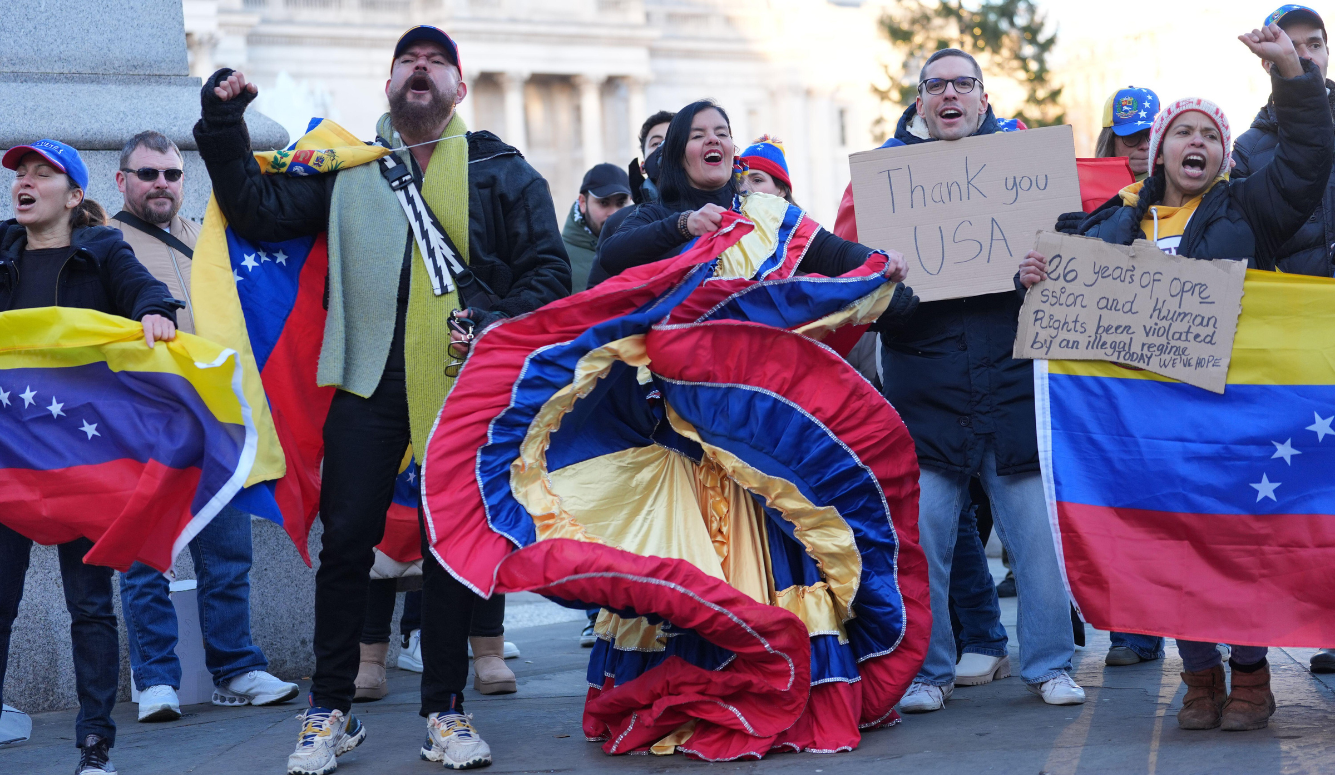Feminism
What Heterodox Feminism Is Not
It's not enough to be a dissenter: it also matters what you are dissenting from and what you're getting out of it.

The Heterodox Academy homepage declares “Great Minds Don’t Always Think Alike” and states, “We advance the principles of open inquiry, viewpoint diversity, and constructive disagreement to improve higher education and academic research.” The Heterodorx podcast’s “About” page defines ‘heterodox’ as “not conforming with accepted or orthodox standards or beliefs.” Terms like ‘heretic,’ ‘dissident,’ ‘apostate,’ and ‘freethinker’ try to capture a similar idea. Kate Phelan and I called our YouTube channel “Feminist Heretics” to mark our difference from other feminist philosophers; Debbie Hayton’s recent book—which critiques gender identity ideology—is called Transsexual Apostate.
These are not neutral terms. In the mouths of the orthodox, they are pejoratives; Galileo, famously, was declared a heretic by the Catholic Church and consigned to house arrest for the remainder of his life. John Stuart Mill was an early figure in the revaluation of the heterodox thinker, arguing for the protection of viewpoint minorities partly on the grounds that they contribute to the finding of truth even when they are wrong. Today, many people value heterodoxy—or at least, they value it in the abstract, even if they find it irritating or uncomfortable when it involves dissent from their cherished beliefs.
Early in May, some of the stars of intellectual heterodoxy came together in New York for an event called Dissident Dialogues. Speakers included Richard Dawkins, Ayaan Hirsi Ali, Steven Pinker, Masih Alinejad, and John McWhorter. There was a panel on feminism featuring Anna Khachiyan, Kathleen Stock, Mary Harrington, Bridget Phetasy, and Diana Fleischman.
What struck me as strange about this panel was that all five panellists appear to be ‘difference feminists’—feminists who think men and women are fundamentally different rather than fundamentally the same. As Cathy Young put it, describing the panel for The Bulwark, “liberal feminism was almost unanimously trashed for rejecting stereotypical views of masculinity and femininity.” Difference here is not a matter of bodies and reproductive systems, which obviously do differ between the sexes. It’s a matter of personalities and psychologies: things like beliefs, desires, attitudes, preferences, dispositions, and behaviours.
Most of the panellists were explicit about their commitment to difference feminism. Diana Fleischman invoked research to push back against the idea that men and women are likely to find the same things fulfilling. Fleischman argues that “women who choose to have family or prioritise hobbies or prioritise taking care of their wellbeing over work, tend to be happier; whereas men tend to be more status-seeking.” In other words, on average, work is more likely to make men happy, because they seek status, and less likely to make women happy, because they don’t. She went on, “whether you’re male or female is actually a good heuristic as to what is going to be the most fulfilling for you in life, and we’ve sort of discarded that [insight] with the greater freedom that we have now.” Fleischman refers to “the guidance of gender roles”—a warm description of a social practice that other women have thought required ‘abolition’ or ‘annihilation.’ And later in the discussion, she remarked that, “right now, talking about psychological sex differences is less controversial than it used to be but it’s still not a mainstream idea.”

Anna Khachiyan referred to the removal of “cultural constraints or social guardrails that originally governed relations between the sexes and kept them sort of separate” as having led to “the innate biological differences between men and women becom[ing] that much more obvious and… harder to ignore,” saying that “feminism really has no answer for this.” On this view, there are innate differences, and the end of the social separation of the sexes has made these more obvious, which Khachiyan appears to think poses a problem for feminists. It’s not entirely clear what she has in mind—she briefly mentions working mothers finding it hard to get organised because they really prefer to stay home with their children. So perhaps the idea is that ‘cultural constraints’ relegated women to the private sphere and men to the public, and feminism’s attempt to open up the private sphere to men and the public sphere to women has now entered an embarrassing confrontation with reality, in which men who could care for children choose not to, and women who could work choose not to, revealing that what feminists called injustice was nature all along.
And finally, Kathleen Stock argued that feminism has a lot of remedial work to do given its recent absurdities, but said after that, “we can decide what well-being for women looks like and what well-being for men looks like you know, and they won’t be the same thing.” Here she is asserting that there is one standard of well-being for women, another for men, as though we were two very different kinds of beings.
Dissident Dialogues is only in its first year, so we might put the lack of viewpoint diversity on this topic down to teething problems. Young notes that the organizer, Winston Marshall (formerly of Mumford and Sons) “conceded that there was ‘room for improvement’ on diversity of opinion.” And maybe diversity of opinion within one panel isn’t always needed, so long as the perspectives represented are dissident relative to the mainstream. Difference feminism is dissident relative to the mainstream, so there isn’t necessarily any problem with a panel of five having a dissident dialogue about feminism in which they all defend difference feminism. The problem is the suggestion that heterodox feminism is difference feminism; rather than that being a difference feminist is one of many ways to be a heterodox feminist.
Let’s assume for the moment that difference feminism is a form of heterodoxy about feminism—a dissent from the mainstream about the sameness/difference of the sexes. (I’ll come back to whether it really is in a minute). Still, if mainstream feminism has orthodoxies other than the sameness of the sexes, then there are many ways to be heterodox about feminism. And indeed it does. Here are some of mainstream feminism’s other orthodoxies:
· It is intersectional
· It is transwomen-inclusive (“transwomen are women!”)
· It is deferential to the standpoint of the oppressed
· It is not biologically determinist (“biology is not destiny”)
· It is not biologically essentialist (there’s no biological property that all women have in common)
· It is pro-pornography
· It is sex-positive and sexually liberal
· It is pro-prostitution (“sex work is work!”)
· It is pro-legal abortion (pro-choice)
· It is pro-surrogacy
· It is individualistic and autonomy-focused (anything a woman chooses is a feminist choice because she chose it)
· It believes in superwomen (women who can succeed simultaneously in multiple domains)
As this list suggests, you can become a heretic pretty easily. You just need to disagree with one of these twelve tenets of the current faith (and there are probably more that I’m forgetting, too). The sameness/difference issue, dissent from which creates difference feminists or reactionary feminists or sex-realist feminists, is just one aspect of a belief in biological essentialism and/or determinism. Their perspectives on this issue divide the women of the Dissident Dialogues panel from mainstream feminists, but they do not divide all heterodox women from all mainstream feminists. Dissident Dialogues could just as well have had a panel of five women committed to sameness feminism, with dissident views about intersectionality, trans inclusion, standpoint theory, pornography, sex, sex work, abortion, surrogacy, choice, and whether a woman can truly have it all. (Mary Harrington veered into this territory late in the panel when she suggested that perhaps women can have it all, just not all at once).
Whether difference feminism is a form of feminist heterodoxy depends on whether heterodoxy is only a matter of dissenting from the majority view. Sameness is the majority view among feminists, and probably among progressives more generally. So if that’s all it takes, then it’s appropriate for it to be the form of feminism represented at a Dissident Dialogues event, even if the event’s name and the composition of the panel might have misled people into thinking that heterodox feminism is only difference feminism.

But here’s an idea: it also matters what dissenters are dissenting from, and what they’re getting out of it.
Here are two examples, unrelated to feminism, to consider. One: the stubborn homophobe, who opposed gay marriage, who sticks with his views even after equal marriage is won (meaning, a majority of the country supports it). Two: the climate scientist who has gambling debts to pay, and so accepts a side hustle as the spokesperson for a lobby group to keep coalmines open. If we think about heterodoxy in a neutral way, both the stubborn homophobe and the debt-ridden climate scientist are heterodox because they depart from the majority view. But they don’t have much in common with Galileo.
It’s not just that we reserve terms like ‘heterodox,’ ‘dissenter,’ and ‘freethinker’ for those we admire, who we believe to be right in their criticisms of a majority that is wrong. We can also admire people for thinking for themselves even when we think they have reached the wrong conclusions. We can admire how they think. As an academic discipline, philosophy encourages its students to question everything. There is no orthodoxy too sacred to question and questioning it only to find it well-justified is a perfectly useful thing to do.
The problem is that neither the climate scientist nor the homophobe is a freethinker at all. The climate scientist isn’t a real dissident—he’s getting paid to say what he says. There appears to be viewpoint diversity when there isn’t, there’s just someone defending things he doesn’t necessarily believe, for self-interested reasons. The homophobe, on the other hand, was part of a prejudiced majority that merely became a minority when social norms shifted.
If the job of the dissident is only to disagree with the existing majority, then the climate scientist is just as heterodox as the initial climate activists and the homophobe is just as heterodox as the original gay rights activists. I don’t find that plausible. So here’s a refinement: the job of the heterodox is not merely to disagree, no matter why, but specifically to critique what has become “dead dogma” (to invoke John Stuart Mill) and push back against the excesses of the new majorities.
This idea can be plugged back into thinking about heterodox feminism. Sex difference used to be the orthodoxy against which sex sameness was the feminist heterodoxy. But ‘sameness’ has not been achieved, and so cannot have become “dead dogma.” And only if difference feminism is true and sameness feminism is false has the fight for sameness produced excesses—difference feminists view measures to increase women’s participation or representation in specific fields as excesses because they view them as destined to fail. But if sameness feminism is true, there is no excess to critique, and the difference feminists are more akin to the homophobe whose society has changed around him.
When Louise Perry asks whether the sexual revolution has been good for women, she is critiquing the excesses of dissidents-become-majority; that is heterodox feminism at its finest. But when Fleischman, Khachiyan, and Stock speak as though it’s empirically settled that men and women are different kinds of humans, they are in agreement with a past prejudiced majority that has become a viewpoint minority only in virtue of social norms shifting. (As a colleague put it to me recently, if we all agree it’s sexist when Aristotle says it, why is it suddenly feminist just because a woman says it?)
Thinking carefully and critically is good; thinking independently is good. But disagreeing is not necessarily good. It depends what you are disagreeing with and why. You are not ‘heterodox’ in a way that we now think of as positive because you ask whether slavery was really so bad. And so too for feminism; you are not heterodox in a positive sense because you ask whether women really do belong in the home. If we want to see heterodoxy as something to be admired, we’d better make sure we’re not counting as heterodox views that are merely those of surpassed majorities.






